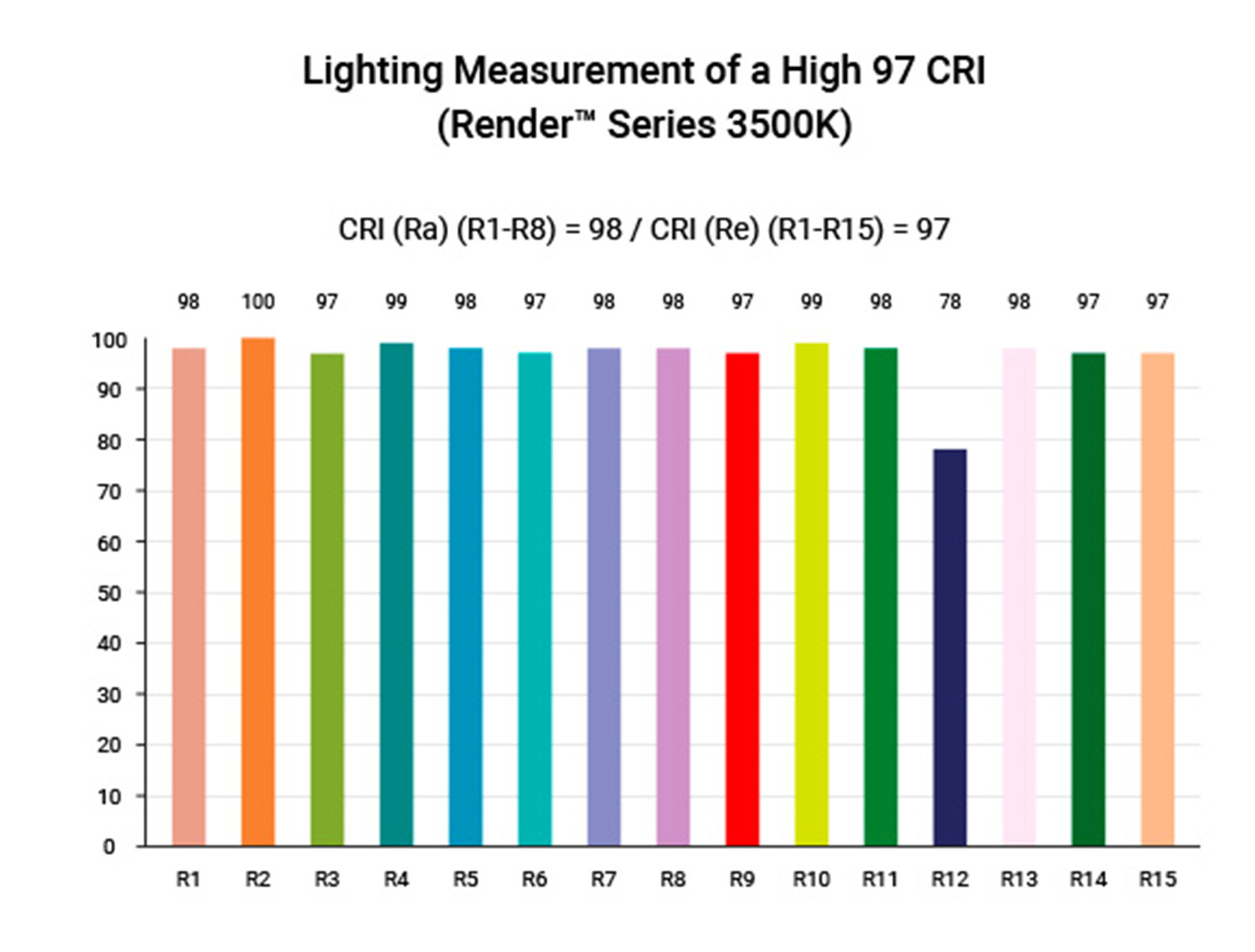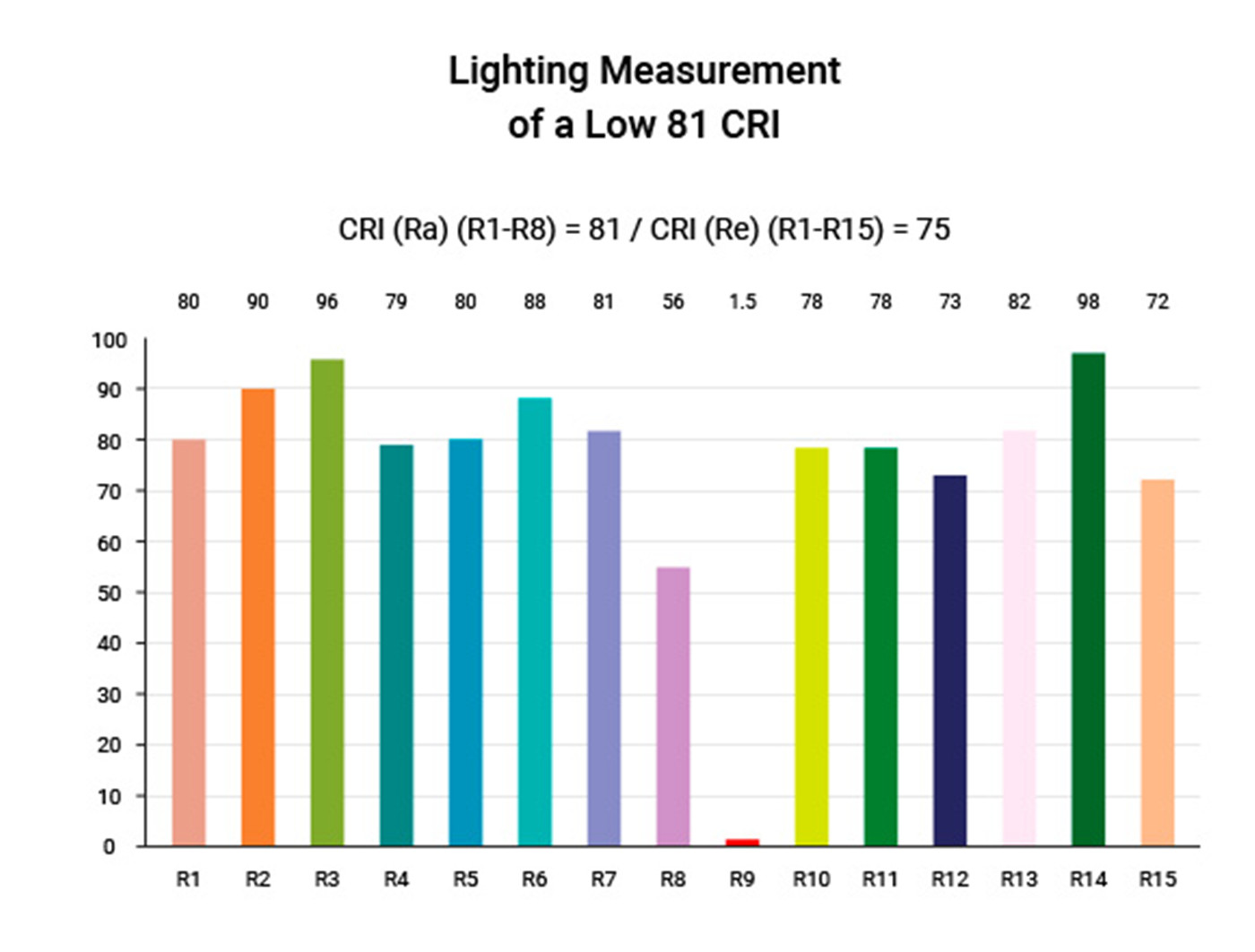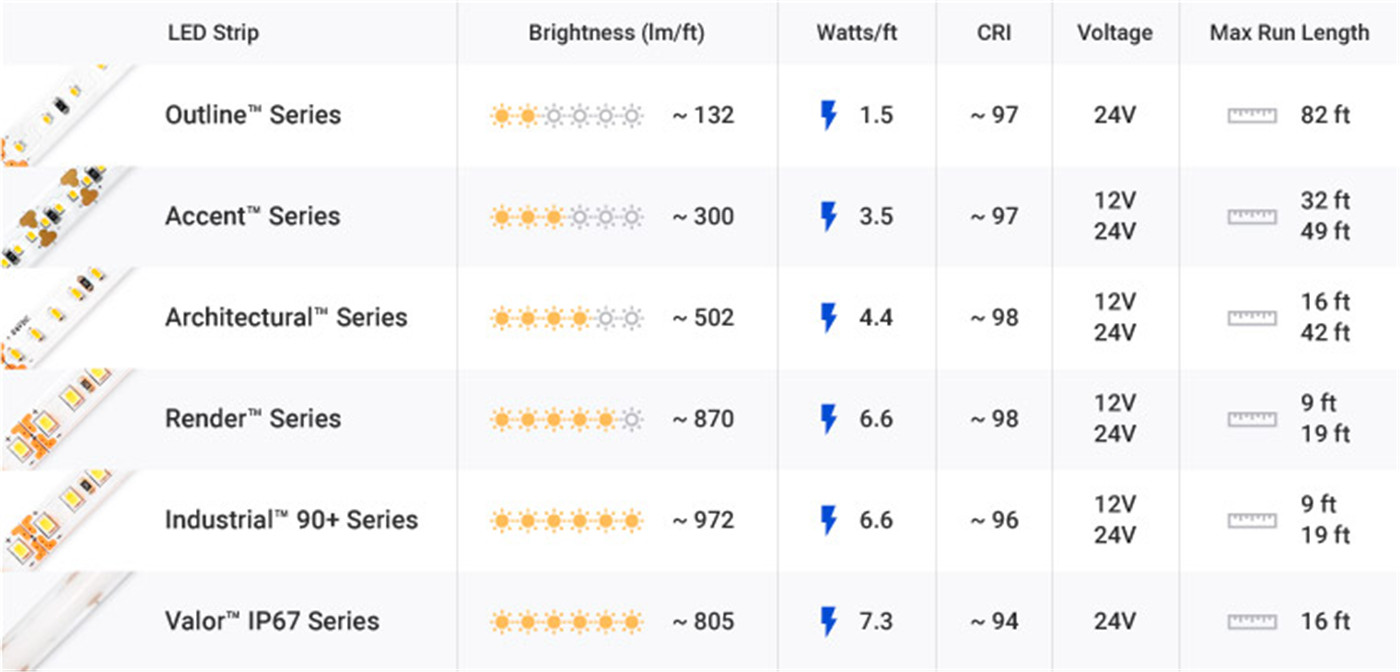
What is Color Rendering Index (CRI) and Why Is It Important to LED Lighting?
Can't tell the difference between the black and navy-colored socks in your walk-in closet under your old fluorescent lights? Could be that the current lighting source has a very low CRI level. Color Rendering Index (CRI) is a measurement of how natural colors render under an artificial white light source when compared with sunlight. The index is measured from 0-100, with a perfect 100 indicating that colors of objects under the light source appear the same as they would under natural sunlight. CRIs under 80 are generally considered 'poor' while ranges over 90 are considered 'great'.
High CRI LED lighting renders beautiful, vibrant tones across the full-color spectrum. However, CRI is only one measurement for light quality. To truly understand a light source’s capability to render the colors you want, there are deeper tests that we do and our lighting scientists recommend. We will detail that further on here.
Which CRI Ranges to Use
When purchasing and installing white LED lights, we recommend a CRI of over 90 but also say in some projects, a minimum of 85 can be acceptable. Below is a brief explanation of the CRI ranges:
CRI 95 - 100 → Phenomenal color rendering. Colors appear as they should, subtle tones pop out and are accented, skin tones look beautiful, art comes alive, backsplashes and paint show their true colors.
Used widely in Hollywood production sets, high-end retail stores, printing and paint shops, design hotels, art galleries, and in residential applications where natural colors need to shine brightly.
CRI 90 - 95 → Great color rendering! Almost all colors 'pop' and are easily distinguishable. Noticeably great lighting starts at a CRI of 90. Your newly installed teal-colored backsplash in your kitchen will look beautiful, vibrant, and fully saturated. Visitors begin to compliment the counters, paint, and details of your kitchen, but little do they the lighting is mostly responsible for it looking so amazing.
CRI 80 - 90 → Good color rendering, where most colors are rendered well. Acceptable for most commercial uses. You may not see items as fully saturated as you would like.
CRI Below 80 → Lighting with a CRI below 80 would be considered to have poor color rendering. Under this light, items and colors may look desaturated, drab, and at times unidentifiable (like being unable to see the difference between black and navy-colored socks). It would be difficult to distinguish between similar colors.

Good color rendering is key for photography, retail store displays, grocery store lighting, art shows, and galleries just to name a few. Here, a source of light with a CRI above 90 will ensure that colors look exactly how they should, accurately rendered and appear crisper and brighter. High CRI lighting is equally valuable in residential applications, as it can transform a room by highlighting design details and creating a comfortable, natural overall feel. Finishes will have more depth and luster.
Testing for CRI
Testing for CRI requires special machinery designed specifically for this purpose. During this test, the light spectrum of a lamp is analyzed into eight different colors (or “R values”), termed R1 through R8.
There are 15 measurements which can be seen below, but the CRI measurement only uses the first 8. The lamp receives a score from 0-100 for each color, based on how natural the color is rendered in comparison with how the color looks under a “perfect” or “reference” light source such as sunlight at the same color temperature. You can see from the examples below, even though the second picture has a CRI of 81, it is terrible at rendering the color red (R9).


Lighting manufacturers now list CRI ratings on their products, and government initiatives such as California’s Title 24 ensure the installation of efficient, high CRI lighting.
Though keep in mind that CRI is not the stand-alone method for measuring lighting quality; the Lighting Research Institute report also recommends the combined use of TM-30-20 Gamut Area Index.
CRI has been used as a measurement since 1937. Some believe that the CRI measurement is flawed and outdated, as there are better ways to now measure the quality of rendering from a light source. These additional measurements are Color Quality Scale (CQS), IES TM-30-20 including Gamut Index, Fidelity Index, Color Vector.
CRI - Color Rendering Index – How closely the observed light can render colors like the sun, using 8 color samples.
Fidelity Index (TM-30) – How closely the observed light can render colors like the sun, using 99 color samples.
Gamut Index (TM-30) – How saturated or desaturated colors are (aka how intense the colors are).
Color vector Graphic (TM-30) – Which colors are saturated/desaturated and whether there is a hue shift in any of the 16 color bins.
CQS - Color Quality Scale – An alternative to the unsaturated CRI measurement colors. There are 15 highly saturated colors that are used to compare chromatic discrimination, human preference, and color rendering.
Which LED Strip Light is Best for Your Project?
We have designed all of our white LED strips to have a high CRI above 90 with only one exception (for industrial use), which means that they do an excellent job rendering the colors of the items and spaces you’re illuminating.
On the top end of things, we have created one of the highest CRI LED strip lights for those who have very specific standards or for photography, television, textile work. The UltraBright™ Render Series has near-perfect R values, including a high R9 score. You can find here all of our photometric reports where you can see the CRI values for all of our strips.
Our LED strip lights and light bars come in many varieties of brightnesses, color temperatures, and lengths. What they have in common is the extremely high CRI (and CQS, TLCI, TM-30-20). In each product page, you will find photometric reports that show all these readings.
Comparison of High CRI LED Strip Lights
Below you will see a comparison between the brightnesses (lumens per foot) of each product. We are always available to assist you in selecting the right product as well.

Post time: Aug-07-2023







